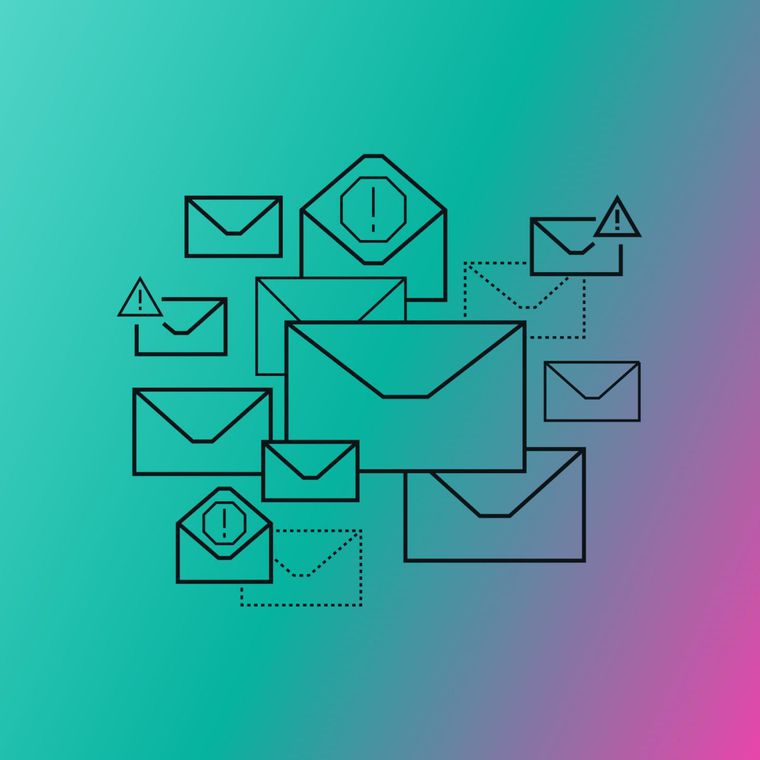Gmail uses TLS for transport encryption but lacks the end-to-end protection required by many regulations. Healthcare and financial services typically need S/MIME or gateway solutions that maintain encryption at rest.
Email Encryption
Email encryption transforms readable messages into unreadable ciphertext, protecting sensitive data from interception while ensuring only authorized recipients can decode business communications and regulated information.
What Is Email Encryption?
Email encryption is the process of converting plaintext messages into scrambled ciphertext using cryptographic algorithms, ensuring that only authorized recipients with the correct decryption keys can read the original content.
This protection extends beyond message bodies to include attachments, metadata, and embedded links, safeguarding sensitive information whether data moves between servers (in transit) or sits in mailboxes (at rest).
Modern encryption serves as a critical security layer for organizations handling personal information, financial records, or intellectual property through email, which remains the primary business communication channel despite the emergence of collaboration platforms.
How Email Encryption Works
Email encryption follows a systematic process from message creation through secure delivery, employing multiple cryptographic techniques to protect data at each stage.
The process begins when a sender composes a message. The email client applies encryption algorithms, typically Advanced Encryption Standard (AES) for content and Rivest-Shamir-Adleman (RSA) for key exchange, to scramble the message and attachments. This creates a ciphertext that appears as random characters to anyone without the decryption key.
During transmission, Transport Layer Security (TLS) creates an encrypted tunnel between mail servers, preventing network eavesdropping. The TLS handshake authenticates servers, agrees on cipher suites, and generates session keys for that specific connection. Messages remain protected as they hop between servers on their journey to recipients.
Upon arrival, the recipient's private key decrypts the session key, which then restores the original message. Modern systems utilize hybrid cryptography, which combines the speed of symmetric encryption for content with the security of asymmetric encryption for key distribution. This entire process executes in milliseconds, transparent to users while maintaining protection throughout the email lifecycle.
Types of Email Encryption
Organizations select from various encryption methods based on their security requirements, user experience priorities, and infrastructure constraints. These include:
Transport Layer Security (TLS/STARTTLS)
TLS encrypts the communication channel between mail servers automatically, providing baseline protection without user intervention. STARTTLS upgrades plain connections to encrypted ones opportunistically. While this protects messages during transmission, content becomes readable once delivered to mailboxes unless additional encryption layers exist.
Most email providers enable TLS by default, making it foundational rather than comprehensive protection. Messages remain vulnerable at rest and during server-side processing.
S/MIME (Secure/Multipurpose Internet Mail Extensions)
S/MIME provides end-to-end encryption using certificates issued by trusted Certificate Authorities. This approach integrates seamlessly with enterprise email clients, offering both message encryption and digital signatures for sender authentication. Organizations favor S/MIME because it scales across thousands of users without requiring manual key management.
The certificate-based model ensures identity verification while maintaining compatibility with major email platforms. Annual certificate renewal and centralized trust models represent the primary operational considerations.
PGP/OpenPGP (Pretty Good Privacy)
PGP offers equivalent security to S/MIME but uses a decentralized web-of-trust model where users generate and validate keys independently. This eliminates reliance on certificate authorities, appealing to privacy-focused organizations and government agencies.
However, PGP requires technical expertise for key management and lacks the seamless integration that S/MIME provides. Users must manually exchange and verify public keys, creating adoption barriers in large organizations.
Gateway and Portal Solutions
Email encryption gateways protect messages through web portals or secure PDF attachments when recipients lack compatible encryption software. These solutions maintain strong protection while eliminating recipient-side configuration requirements.
Organizations deploy gateway encryption for external communications where controlling recipient capabilities proves impossible. The trade-off involves additional steps for recipients accessing protected content.
Why Email Encryption Matters for Enterprises
Email encryption addresses three critical enterprise imperatives that directly impact business operations and risk management. These include:
Regulatory Compliance
Regulations, including HIPAA, GDPR, PCI DSS, and SOX, explicitly recognize encryption as an acceptable safeguard for protected data. GDPR enforcement actions demonstrate that inadequate protection triggers fines reaching millions of euros. HIPAA considers encryption a safe harbor provision, and encrypted data breaches may avoid mandatory disclosure requirements.
Demonstrating cryptographic protection during audits provides measurable evidence of appropriate security controls. This documentation becomes essential during compliance assessments and investigations into breaches.
Risk Reduction
Encryption removes value from successful attacks by rendering stolen data useless without decryption keys. Even when phishing campaigns compromise credentials or insiders leak databases, encrypted content provides attackers with nothing to monetize or weaponize.
Digital signatures verify sender authenticity, preventing impersonation attacks that bypass other controls. This cryptographic proof complements behavioral detection by definitively establishing message integrity and origin.
Business Enablement
Secure communication channels enable confident exchange of sensitive information with customers, partners, and regulators. Board members discuss strategic matters, legal teams share confidential documents, and finance departments transmit payment instructions, all requiring protection from unauthorized access.
Organizations with mature encryption practices maintain customer trust even during security incidents. This transforms encryption from reactive compliance into proactive business enablement.
Implementation Considerations
Successful email encryption deployment requires striking a balance between security strength, user experience, and operational complexity.
Deployment architecture choices, such as whether to use gateway or client-level encryption, affect both security and usability. Gateway solutions simplify management but may lack end-to-end protection. Client-level encryption provides stronger security but requires endpoint configuration and user training.
Automation capabilities ensure consistent protection, eliminating the need for user discretion. Policy-based encryption automatically secures messages containing sensitive data patterns, removing human error from security decisions.
Integration requirements with existing email platforms determine implementation complexity. Native support in platforms streamlines deployment, while third-party solutions may require extensive configuration.
The key management systems represent the foundation of encryption security. Weak key generation, storage, or distribution compromises all protected communications regardless of algorithm strength.
External recipient experience affects business operations when partners struggle to access encrypted content. Solutions must strike a balance between security and accessibility to maintain effective communication.
These considerations guide architecture decisions that determine long-term encryption success.
Common Misconceptions About Email Encryption
Persistent myths prevent organizations from implementing comprehensive email protection across all communications.
TLS Provides Complete Protection: This ignores that transport encryption only protects data in motion. Messages become readable in mailboxes and on servers, creating vulnerabilities that attackers exploit through credential theft or server compromise.
Encryption Impacts Performance: This reflects historical limitations that modern processors eliminated. Current systems handle cryptographic operations efficiently without noticeable delays during normal email operations.
Only Regulated Industries Need Encryption: It overlooks that every organization handles sensitive data. Trade secrets, employee information, and customer data all require protection regardless of the industry sector.
Encryption Prevents Email Security Scanning: Assumes incompatibility between protection and threat detection. Modern platforms decrypt, scan, and re-encrypt messages seamlessly while maintaining security.
Implementation requires extensive resources: This may have been true historically, but cloud services and integrated platforms now provide enterprise-grade encryption without dedicated infrastructure or specialized teams.
Ready to strengthen your email security beyond encryption alone? Get a demo to see how Abnormal provides comprehensive protection through behavioral detection.
Frequently Asked Questions (FAQs)
Get the Latest Email Security Insights
Subscribe to our newsletter to receive updates on the latest attacks and new trends in the email threat landscape.
Featured Resources

Product
The Last 1% of Attacks: Rise and Fall of the SEGMay 29, 2025
/
5 min read

Artificial Intelligence
AI, People, and Policy: What We Learned from Convergence Season 4May 22, 2025
/
6 min read

Threat Intel
Legitimate Senders, Weaponized: How Abnormal Stops Email Bombing AttacksMay 19, 2025
/
6 min read

CISO Insights
Through the Looking Glass: A CISO's Take on RSAC 2025May 09, 2025
/
7 min read